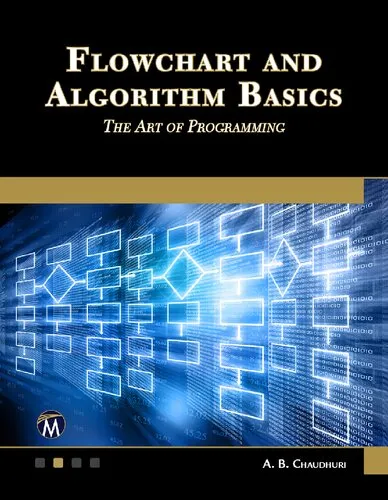The Ex-Prisoner's Dilemma: How Women Negotiate Competing Narratives of Reentry and Desistance
4.5
بر اساس نظر کاربران

شما میتونید سوالاتتون در باره کتاب رو از هوش مصنوعیش بعد از ورود بپرسید
هر دانلود یا پرسش از هوش مصنوعی 2 امتیاز لازم دارد، برای بدست آوردن امتیاز رایگان، به صفحه ی راهنمای امتیازات سر بزنید و یک سری کار ارزشمند انجام بدینکتاب های مرتبط:
معرفی کتاب «The Ex-Prisoner’s Dilemma: How Women Negotiate Competing Narratives of Reentry and Desistance»
کتاب «The Ex-Prisoner's Dilemma» نوشته آندریا ام لورنتز اثری پژوهشی و آموزنده است که به بررسی زندگی زنان پس از آزادی از زندان و چالشهای آنها در بازگشت به جامعه میپردازد. این کتاب عمق بیشتری به روایتهای درهمتنیدهای میدهد که زنان پس از زندان در تلاش برای کنار آمدن با هنجارهای اجتماعی، انتظارات فرهنگی، و تلاش برای شکل دادن به هویت جدید خود، تجربه میکنند.
خلاصه کتاب
در این کتاب، نویسنده بر پایه تحقیقات گسترده و مطالعه موردی با زنان مختلف، به تحلیل فرآیند پیچیده بازگشت به جامعه (Reentry) و مبارزه برای ترک رفتارهای مجرمانه (Desistance) میپردازد. زنان پس از آزادی، با "معضل" اساسی روبرو میشوند: در یک سو، فشارهای اجتماعی و انتظارات از سوی خانواده، دوستان، و موسسات اجتماعی برای بازگشت به زندگی عادی و پایبندی به هنجارها قرار دارد؛ و از سوی دیگر، خاطرات گذشته، هویت مجرمانه، و محدودیتهای ساختاری و فرهنگی مانع این مسیر میشوند.
این کتاب نشان میدهد چگونه زنان پس از آزادی، روایتهای چندگانه و گاه متناقض از زندگی خود ایجاد کرده و بین این بخشهای متناقض هویت خود تعادل برقرار میکنند. از تجربیات شخصی گرفته تا سیاستهای سیستم قضایی، همه عوامل نقش مهمی در این معضل پیچیده دارند.
نکات کلیدی کتاب
- درک عمیق از فرآیند بازگشت به جامعه (Reentry) زنان پس از زندان.
- تأثیر هویت، نقش فرهنگی، و انتظارات اجتماعی بر ترک جنایت (Desistance).
- بررسی نقش سیستم عدالت کیفری در تقویت یا تضعیف فرآیند بازگشت به جامعه.
- نقش خانواده و شبکههای اجتماعی در حمایت از زنان پس از آزادی.
- دلایل ماندگاری هویتهای مجرمانه در برخی افراد و روشهای مبارزه با آن.
جملات معروف از کتاب
"Reentry and desistance require more than individual determination—they demand a collective understanding of systemic barriers."
"Women navigating life after incarceration grapple not only with external limitations but also with the persistent chains of internalized stigma."
"The labels ex-prisoner or offender often overshadow the complex identities and incredible resilience of these women."
اهمیت این کتاب
کتاب «The Ex-Prisoner's Dilemma» با درک عمیق و ارائه روایتهای واقعی، به یکی از حوزههای حیاتی اما کمتر مورد توجه در حوزه علم اجتماعی و عدالت کیفری میپردازد. این کتاب نهتنها برای دانشگاهیان و محققان، بلکه برای سیاستگذاران، کنشگران اجتماعی، و حتی عموم جامعه نیز اهمیت دارد. دغدغه اصلی کتاب تأکید بر نقش جامعۀ گستردهتر در تسهیل روند بازگشت به جامعه است و اینکه چگونه تغییرات ساختاری میتواند تأثیر شگرفی بر زندگی زنان بازگشته از زندان داشته باشد. این اثر پایهای برای گفتگوهای مهم پیرامون اصلاح سیستم زندان و بهبود سیاستهای بازپروری است.
Introduction to "The Ex-Prisoner's Dilemma: How Women Negotiate Competing Narratives of Reentry and Desistance"
Reentry into society after incarceration is a complex and multifaceted process, rife with challenges, stigmas, and conflicting expectations. My book, The Ex-Prisoner's Dilemma: How Women Negotiate Competing Narratives of Reentry and Desistance, is a critical exploration of how formerly incarcerated women navigate this turbulent terrain. Drawing on extensive qualitative research, the book examines how these women reconcile the demands of rehabilitation, societal expectations, and personal transformation. It sheds light on their struggles, resilience, and the systemic barriers they face during the reentry process.
In a time when criminal justice reform is increasingly becoming a part of public discourse, understanding the lived experiences of formerly incarcerated individuals—especially women—is essential. This book contributes to that conversation by focusing on the gendered aspects of reentry and the unique dilemmas women encounter as they strive to reintegrate into their communities while avoiding recidivism. Let this introduction guide you as we delve into its main themes, insights, and the significance of foregrounding women's voices in this critical area of study.
Detailed Summary of the Book
Centered around interviews and ethnographic observations, The Ex-Prisoner's Dilemma explores the juxtaposition of societal narratives against women’s own perceptions and lived experiences as they transition back into society. The title itself suggests a specific tension: society expects former prisoners to conform to ideals of redemption and desistance, while at the same time subjecting them to structural constraints and stigma that often hinder their ability to succeed.
At its core, the book examines how women negotiate these conflicting narratives. On one hand, there is the 'successful reentry' narrative, which emphasizes obtaining stable housing, consistent employment, and rebuilding broken relationships. On the other hand, there are systemic and deeply ingrained judgmental perspectives that view former prisoners as perpetual threats or failures. The research identifies that women are often caught between these two poles, creating a deeply contested process of self-identification and public perception.
Through this in-depth inquiry, the book also highlights how race, class, and familial responsibilities intersect to create unique challenges for women. For example, women of color and mothers disproportionately face systemic discrimination and greater stigma, making their pathways to desistance that much harder. These insights provide readers with a nuanced understanding of why the process of reentry cannot simply be reduced to personal responsibility but must be viewed through a broader socio-structural lens.
Key Takeaways
- Reentry and desistance are not linear processes; they involve constant negotiation between personal effort and systemic barriers.
- Women face unique, gendered experiences during reentry, often rooted in their roles as caregivers, daughters, or mothers.
- The structural inequalities of race, class, and gender heavily influence the difficulties women face in accessing housing, employment, and social acceptance post-incarceration.
- Transformation and self-perception are central themes in desistance, as women attempt to construct stable identities despite external stigmatization.
- The criminal justice and support systems often perpetuate the challenges of reintegration rather than resolving them.
Famous Quotes from the Book
"Reentry is not just about 'starting over'; it is about piecing together lives that have been broken by both individual choices and systemic injustices."
"The dilemma is not merely about desistance versus relapse. It is about proving one's worth in a society that views punishment as permanent."
"For women, reentry is uniquely shaped by the expectation that they take up traditional roles again, often at the expense of their own personal well-being."
Why This Book Matters
The criminal justice system in the United States disproportionately impacts women, particularly those from marginalized communities. Despite this, there is a lack of research focused on women’s specific reentry challenges and lived experiences. The Ex-Prisoner's Dilemma fills this critical gap, providing a platform for voices that are often left unheard in discussions on incarceration and reentry.
By delving deeply into the societal, structural, and personal challenges these women face, the book challenges popular assumptions about "successful rehabilitation" and "personal failure." It sheds light on the broader systemic barriers at play and advocates for policies and practices that address these inequities. Whether you are a policymaker, scholar, advocate, or simply someone interested in criminal justice reform, this book provides a thought-provoking and impactful perspective on an urgent social issue.
Ultimately, The Ex-Prisoner's Dilemma reminds us that reentry requires more than second chances. It demands a societal reckoning with the structures that perpetuate inequality and hinder true rehabilitation. It is a call for compassion, understanding, and systemic change.
دانلود رایگان مستقیم
شما میتونید سوالاتتون در باره کتاب رو از هوش مصنوعیش بعد از ورود بپرسید
دسترسی به کتابها از طریق پلتفرمهای قانونی و کتابخانههای عمومی نه تنها از حقوق نویسندگان و ناشران حمایت میکند، بلکه به پایداری فرهنگ کتابخوانی نیز کمک میرساند. پیش از دانلود، لحظهای به بررسی این گزینهها فکر کنید.
این کتاب رو در پلتفرم های دیگه ببینید
WorldCat به شما کمک میکنه تا کتاب ها رو در کتابخانه های سراسر دنیا پیدا کنید
امتیازها، نظرات تخصصی و صحبت ها درباره کتاب را در Goodreads ببینید
کتابهای کمیاب یا دست دوم را در AbeBooks پیدا کنید و بخرید
1192
بازدید4.5
امتیاز0
نظر98%
رضایتنظرات:
4.5
بر اساس 0 نظر کاربران
Questions & Answers
Ask questions about this book or help others by answering
No questions yet. Be the first to ask!






![The Ultimate iOS Interview Playbook: Conquer Swift, frameworks, design patterns, and app architecture [Team-IRA]](https://s3.refhub.ir/images/thumb/The_Ultimate_iOS_Interview_Playbook__Conquer__29925.webp)







